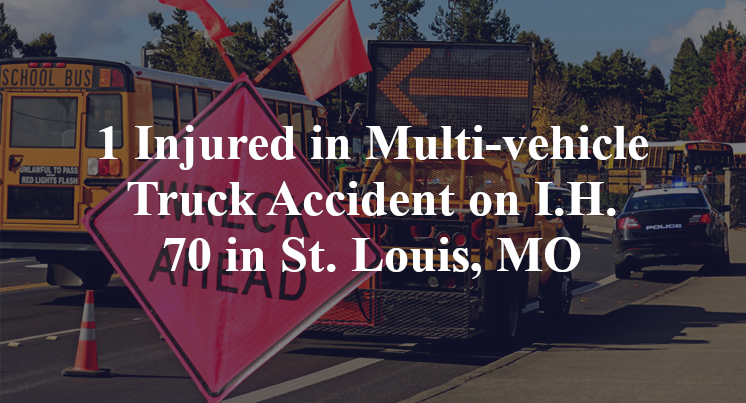1 Injured in Multi-vehicle Truck Accident on I.H. 70 in St. Louis, MO
St. Louis, MO — July 20, 2025, one person was injured due to a multi-vehicle truck accident at approximately 5:30 p.m. along Interstate Highway 70.
According to authorities, the accident took place on I.H. 70 in the vicinity of Union Boulevard.

Details surrounding the accident remain scarce. Officials indicate that, for as yet unknown reasons, a collision took place between several vehicles, one of which was apparently an 18-wheeler that had jackknifed. Reports state that one person sustained critical injuries due to the wreck and was transported to a local medical facility by EMS in order to receive necessary treatment. Additional details pertaining to this incident—including the identity of the victim—are not available at this point in time. The investigation is currently ongoing.
Commentary by Attorney Michael Grossman
When an 18-wheeler jackknifes on a busy stretch of interstate like I-70, the key question is: What caused the driver to lose control in the first place? Jackknifing doesn’t just happen—it’s almost always a sign that something went wrong, whether with the truck, the road, or the person behind the wheel.
In most cases I’ve seen, jackknifing occurs when a trailer swings out to one side, usually because the wheels lock up or the driver brakes too hard under unstable conditions. That can happen in wet weather, sudden stops, or when the driver is going too fast for traffic. It can also result from poor weight distribution inside the trailer—if the load isn’t balanced, it affects how the vehicle handles in a high-pressure moment.
But it’s not just about physics—it’s about training. Drivers are supposed to know how to avoid jackknifing by adjusting speed, anticipating congestion, and braking gradually. If those techniques weren’t followed here, then the focus shifts to the driver's judgment and, potentially, the company that put them behind the wheel.
I’ve worked on cases where trucking companies failed to screen drivers properly or didn’t train them adequately to handle emergency maneuvers. In those situations, the problem wasn’t just what the driver did in the moment—it was that the company never prepared them to do better. Whether that’s a factor here remains to be seen, but it’s one of the first areas investigators should examine.
The other crucial piece of the puzzle is black box data. It will show the truck’s speed, braking patterns, and steering inputs in the seconds before the crash. Without that, it’s impossible to determine whether this jackknife was the result of unavoidable conditions—or a preventable failure to control the rig.
Key Takeaways:
- Jackknifing usually signals a loss of control due to hard braking, speed, or poor load distribution.
- Driver behavior—especially how they responded to road or traffic conditions—is central to understanding what went wrong.
- Company training, oversight, and hiring practices may come into question if the driver wasn’t adequately prepared.
- Black box data will reveal speed, braking, and other inputs necessary to reconstruct the incident.
- Determining liability hinges on whether the jackknife was avoidable through proper driving or operational practices.

“These are essential reads for anyone dealing with the aftermath of a truck wreck”– Attorney Cory Carlson